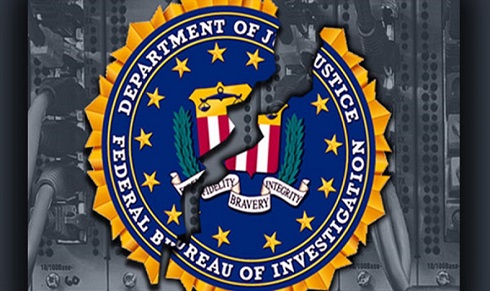FBI Study on ‘Lone Wolf’ Terrorism Released

 During the last four years — beginning in the midst of the 2016 presidential race — it’s been difficult to view the Federal Bureau of Investigation as anything more than a political tool of the left populated by the likes of FBI Director and congenital leaker James Comey, FBI senior agents and office adulterers Peter Strzok and Lisa Page, FBI Assistant Director James McCabe and others.
During the last four years — beginning in the midst of the 2016 presidential race — it’s been difficult to view the Federal Bureau of Investigation as anything more than a political tool of the left populated by the likes of FBI Director and congenital leaker James Comey, FBI senior agents and office adulterers Peter Strzok and Lisa Page, FBI Assistant Director James McCabe and others.
During the long, fruitless investigation of President Donald Trump by the Special Counsel Robert Mueller, who served as the FBI Director during the Obama administration, evidence surfaced that Mueller was part of the Deep State.
With so much political subterfuge going on behind the scenes — including the out-and-out cover up of Hillary Clinton’s shenanigans — it was a bit surprising that some agents were actually studying, analyzing and reporting on serious criminal matters such as the recently released report on “lone wolf” terrorists and terrorist attacks or plots.
An FBI study of lone offender terrorist attacks in the U.S. takes an unprecedented look at the backgrounds, behavioral characteristics, and circumstances surrounding 52 attacks since 1972, as well as the singular perpetrators and the bystanders who often see clues but rarely act on them.
The Lone Offender Terrorism Report, produced by the FBI’s National Center for the Analysis of Violent Crime and Behavioral Analysis Unit (BAU) that was released to the National Association of Chiefs of Police and other law enforcement unions and fraternal groups, analyzes domestic terrorist attacks between 1972 and 2015.
Researchers within the Behavioral Analysis Unit reviewed a trove of data and contextual investigative information in FBI case files and state and local police records—as well as academic research and media accounts—to develop a clear picture of the varied circumstances surrounding dozens of lone offender attacks commonly referred to as “lone wolf” terrorist attacks.
The study specifically examined offenders who carried out attacks independent of any direction from a terrorist group or organization. Researchers hope the findings will inform how law enforcement and the public assess and act on potential threats.

“One key concept is there is no one demographic profile,” said Special Agent John Wyman, chief of BAU’s Behavioral Threat Assessment Center, which conducted the research. He said a more holistic analysis is required of individual persons of concern and the wide array of factors that drive individuals to use violence to achieve their goals or resolve their underlying personal issues. “As a result, there’s no checklist or scoresheet someone can use to say whether this person’s a threat or not,” he said.
But there is a lot of information supporting the need to recognize when and how to report potential threats. And that doesn’t just mean law enforcement agencies; the study shows that friends and family of attackers are the most likely to observe potentially threatening behaviors—and to have the ability to put those behaviors into context. These critical bystanders need to understand that history shows it’s better to raise concerns when they arise rather than ignore them.
“Everybody’s got a role—from the parent or sibling or classmate to local law enforcement to mental health counselors—to help us in preventing these acts,” explained Wyman. He said that building teams of people who can appropriately assess and manage threats is key.
“The report’s findings argue for better coordination and cooperation between law enforcement and community stakeholders in order to try and identify and prevent these attacks from happening.”
Effective threat management, the report says, is ultimately enhanced through the sharing of information and collaboration between law enforcement and other non-traditional stakeholders, such as mental health, social services, and probation and parole.
The 80-page report is divided into three sections: the offenders, the attacks, and the bystanders. The report acknowledges that predicting lone offender terrorism incidents is not possible, “but prior research and operational experience support the conclusion that acts of targeted violence, including lone offender attacks, may be preventable.”
Among the key findings:
- 83 percent of offenders had previously exhibited behavior that was hostile or aggressive.
- 96 percent of offenders produced writing or videos intended to be viewed by others.
- In 25 percent of the cases, at least one other individual became aware of the offender’s research, planning, or preparation for an attack.
- In every case, bystanders expressed concern over behaviors at some point prior to an attack.
 “Absent this report and others like it, someone could see something and they’re solely relying on their gut feeling or spider sense to say, ‘That doesn’t look right,’ or ‘That’s concerning,’” Wyman said. “I think by putting this information out there, it helps people get over that barrier. It gives you something to fall back on to validate whatever your gut feeling was.”
“Absent this report and others like it, someone could see something and they’re solely relying on their gut feeling or spider sense to say, ‘That doesn’t look right,’ or ‘That’s concerning,’” Wyman said. “I think by putting this information out there, it helps people get over that barrier. It gives you something to fall back on to validate whatever your gut feeling was.”
In a message in the report, FBI Director Christopher Wray said prevention efforts are enhanced by early recognition of potential issues and reporting by those closest to a person of concern. “Bystanders need guidance to recognize concerning behaviors and overcome natural resistance to reporting,” Wray said. “Just as important as early recognition by bystanders is the need to have well-trained, skilled, and competent receivers of that reporting.”
Wyman said that most lone offenders don’t start off alone—they may have attempted to spread their ideology or tried to join like-minded groups and were rejected. They might be raising red flags that should be recognized as potentially dangerous and worth paying close attention to.
“The ideological offenders are often going to wrap an idea around their personal problems, and they typically want to try and test that idea out on other people,” explained John Wyman, unit chief, FBI Behavioral Threat Assessment Center
Other key findings:
- In most cases, offenders attacked targets that had no or minimal security.
- 25 percent of offenders were formally diagnosed with one or more psychiatric disorders prior to their attack; another 13 percent were diagnosed after their attack.
- In 92 percent of the cases, at least one bystander was aware of the offender’s grievance or ideology; in a quarter of those cases, bystanders reported their concerns to law enforcement.
Based on the findings in the report, its authors suggest that better relationships and communication between law enforcement and community authority figures can improve the connection with bystanders who may be reluctant to report threats. The benefits are immeasurable.
“Potential rewards for early recognition and reporting are incredibly valuable to prevention efforts, lengthening the potential time for prevention efforts before a potential attack,” the report states.
Wyman said the report outlines the public’s role in protecting against lone offenders, akin to a “See Something, Say Something” campaign. “But we need to be looking for things beyond someone leaving a backpack somewhere,” he emphasized. “If we’re catching them just when they’re leaving the backpack, it’s too late. We need to catch these things earlier on.”
Resources


